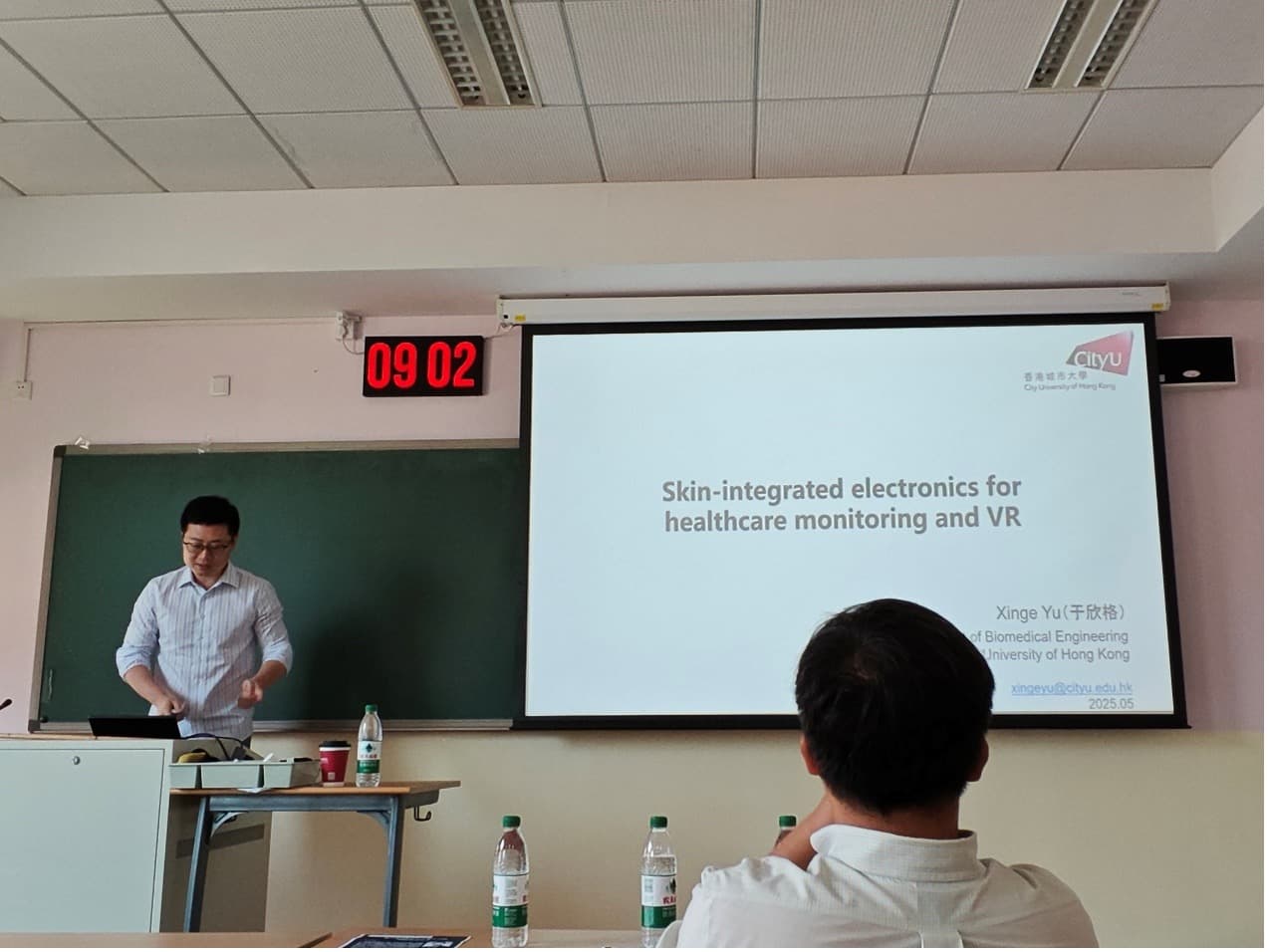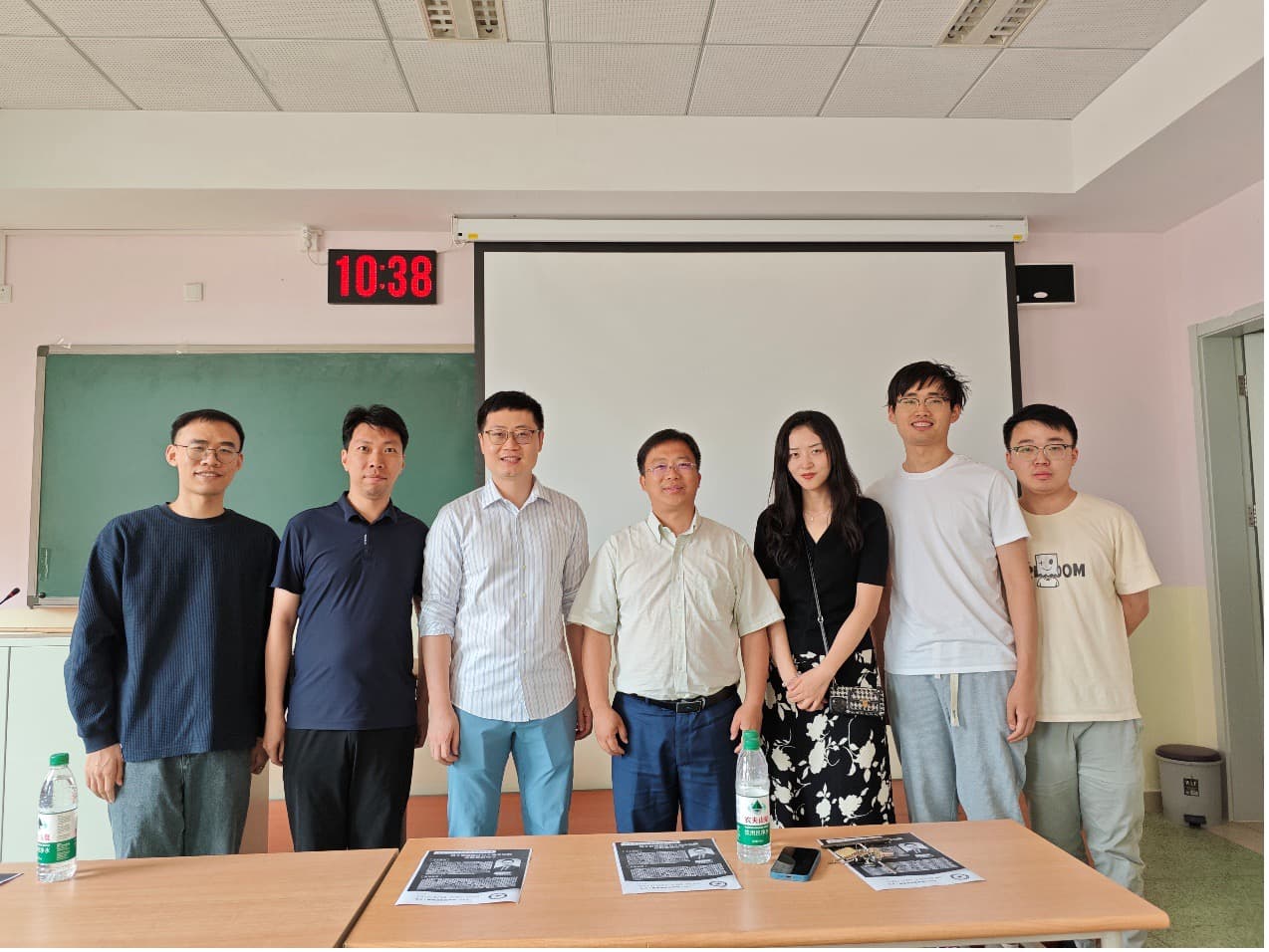At 9 a.m. on May 30, 2025, Professor Xinge Yu from the School of Digital Medicine of City University of Hong Kong, invited by Professor Hui Huang, held a lecture on the theme of “Skin-integrated Electronics for Healthcare Monitoring and VR” at Room 304, Second Academic Park, Yanqihu Campus, University of Chinese Academy of Sciences (UCAS).

Professor Xinge Yu graduated from the Department of Optical Engineering at the University of Electronic Science and Technology of China in 2005 with a Bachelor's degree in Engineering; Graduated from the University of Electronic Science and Technology of China in 2015 with a doctoral degree. Professor Xinge Yu is a member of the Hong Kong Academy of Youth Sciences, Vice Dean of the School of Digital Medicine at City University of Hong Kong, and Deputy Director of the Hong Kong Cardiovascular Health Engineering Research Center. In 2023, he was awarded the Hong Kong RGC Research Fellow, Outstanding Youth Science Foundation (Hong Kong and Macau), MIT Technology Review Innovation 35, IEEE Nanomedicine Inventor, MINE Young Scientist, and the Geneva International Invention Exhibition Gold Award. His research direction is the application of new flexible electronics in the field of biomedicine and intelligent tactile VR. Currently serving as the deputy editor in chief and editorial board member for multiple journals of Science Advances. Professor Xinge Yu has been recognized as one of the top 2% highly cited scholars at Stanford University. He has published over 200 papers in journals such as Nature, Nature Materials, Nature Biomedical Engineering, Nature Machine Intelligence, Nature Electronics, Nature Communications, and Science Advances, and has applied for/been granted over 50 US patents.
Professor Xinge Yu first pointed out that the development of perception and interaction technologies based on flexible electronics and the human body is of great significance in many fields such as biomedicine, health, and sensing. Therefore, this is also a top priority in the research of flexible electronics technology. At present, the global research focus is almost entirely on the sensing technology of flexible electronics, while the research on information feedback of flexible electronics is relatively scarce. One of the main reasons is that flexible information feedback technology relies on actuators that are larger in size, weight, and power consumption compared to sensor devices. However, information feedback technology is an indispensable part of the interaction and perception of flexible electronics. For example, flexible electronics can collect changes in healthy physiological signals by wearing them on the human body. At the same time, by sampling and processing the collected health signals, the wearer's health status and potential diseases can be analyzed in a timely manner, and the user can be informed in a timely manner through feedback methods such as sound and pressure.

Next, Professor Xinge Yu used monitoring heart rate as an example to talk about their team's development of a wearable flexible electronic device with extremely high moisture wicking efficiency. This device is lightweight, scalable, and significantly improves sweat wicking efficiency, solving the most critical problem faced by wearable biomedical devices. It can provide reliable and stable vital sign monitoring for up to a week without discomfort or signal distortion/interruption caused by sweating. In addition, Professor Xinge Yu’s team has also integrated wearable devices with the VR field, developing three multimodal tactile feedback interfaces with temperature, mechanical deformation, and electrical tactile stimulation. This wearable multimodal tactile feedback interface provides users with multi-dimensional high fidelity information, improves the immersion of virtual reality and augmented reality systems, and allows users to participate in the virtual world more immersively.
At the end of the lecture, Professor Xinge Yu and everyone discussed profound issues such as how to achieve power supply for wearable devices, how to process and transmit large amounts of collected data, and what process should be adopted to prepare patterned electrodes. The lecture sparked lively discussions among teachers and classmates. Professor Xinge Yu’s lecture not only deepened the understanding of the interaction and perception of new flexible electronics among the attending teachers and students, but also provided valuable guidance for researchers.

